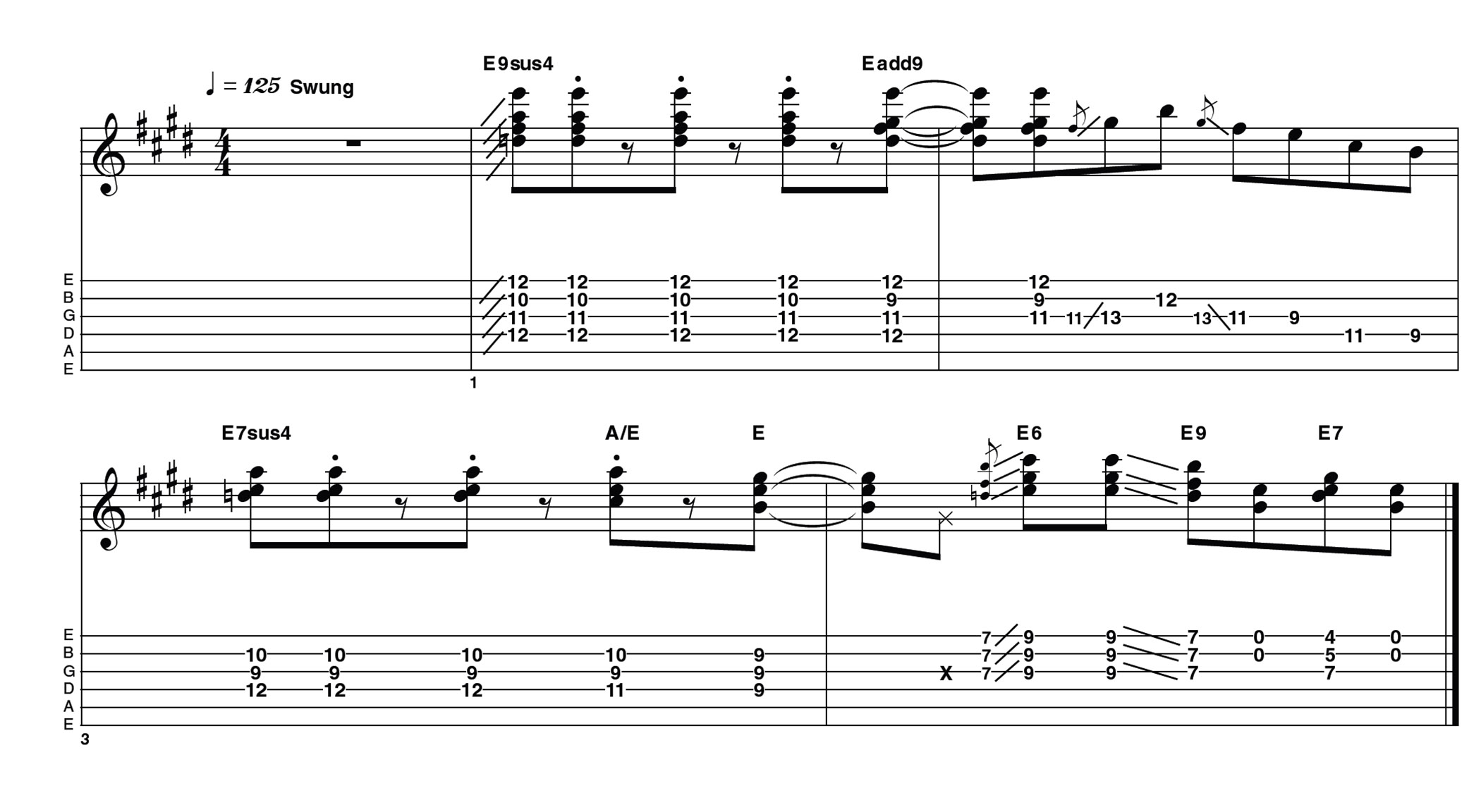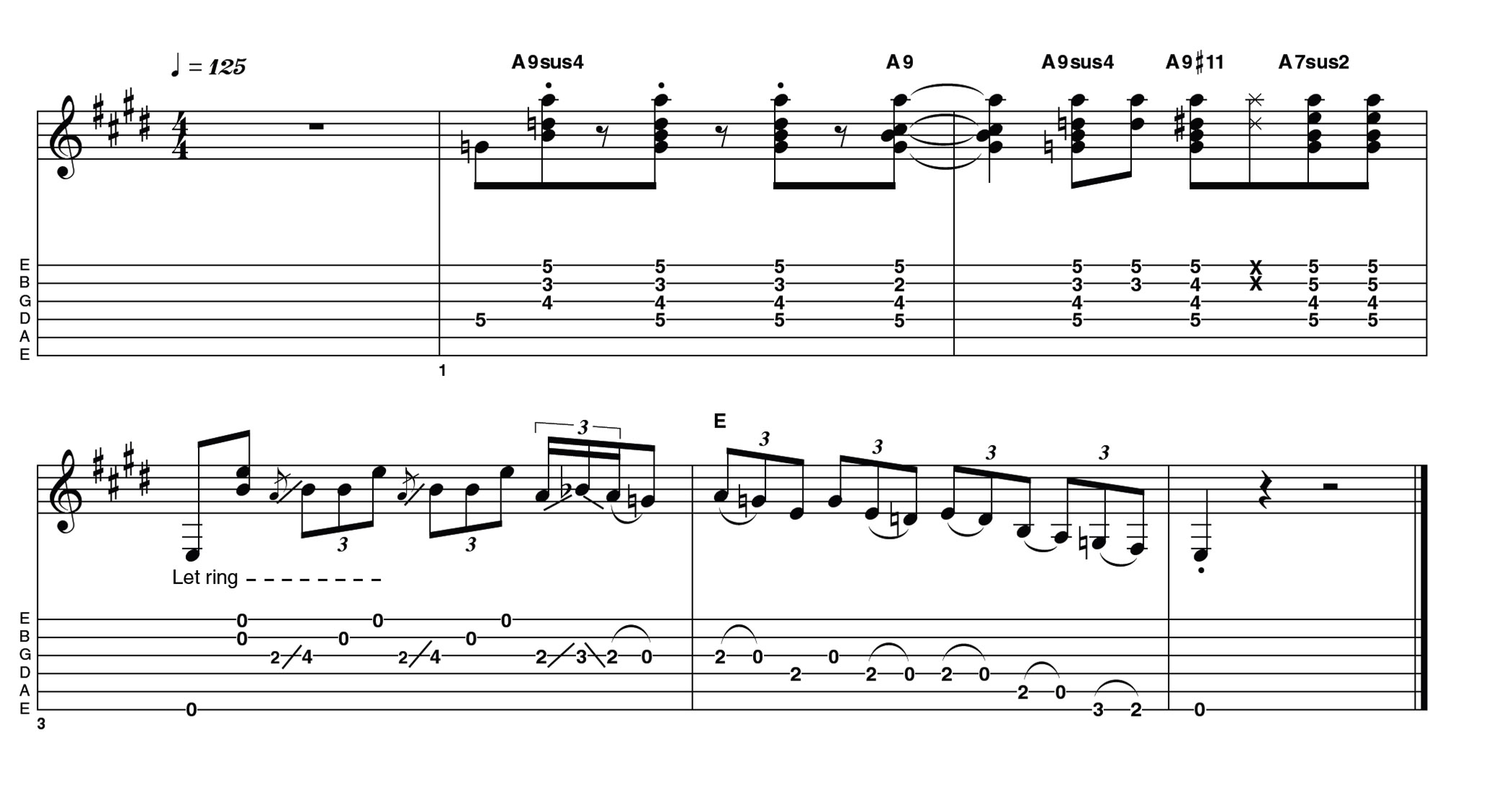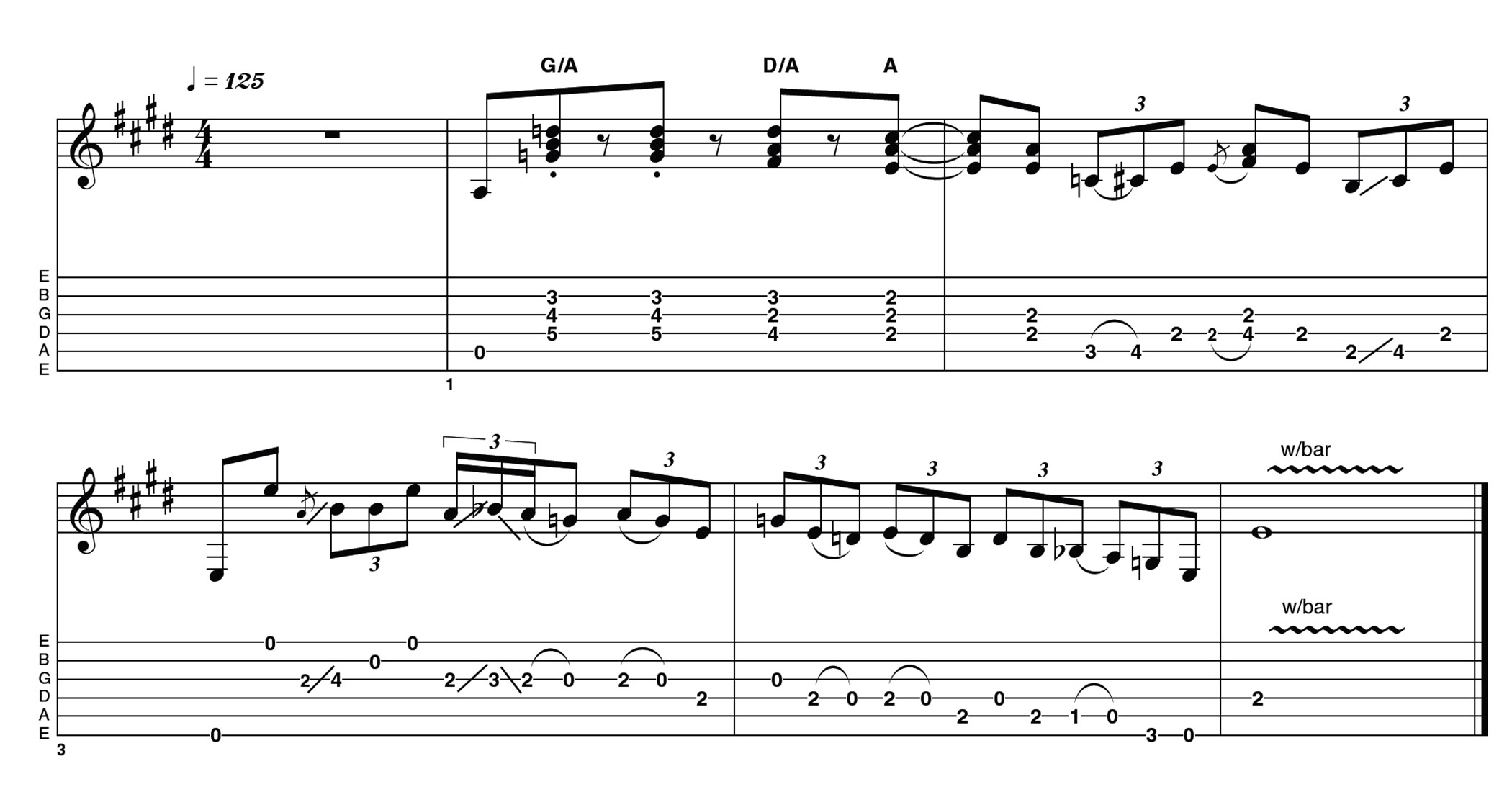How to use chords in a blues guitar solo
We all think of the blues solo in terms of which notes sit atop which chords, but reversing that proposition – and building chords into the solo itself – generates some tasty new phrasing ideas

Our ability to solo over any chord progression is greatly enhanced by understanding the content of those chords, even if we choose to stay purely within the pentatonic/blues scale shapes. With this example solo, I’m essentially turning this approach on its head, building chord/solo ideas over a fairly harmonically simple bass and drum backing. In other words, there are just two chords!
You’re free to fill the space between the bass guitar and drums in a variety of ways. My approach was to steal some ideas from Kirk Fletcher and string together different chord inversions or triads around the fretboard.
I saw these as my building blocks in the same way that you might visualise the pentatonic shapes as your options when putting together a single-note solo. As you work out which shapes fit where in the progression (and on the fretboard), you ‘unlock’ new levels of possibility – and indeed complexity.
Of course, I haven’t played this exclusively in chord shapes; there are a few pentatonic lines linking the chords here and there. It’s really a matter of taste how you balance the chord and single-note content in a ‘trio’ situation such as this. I tend to find stating the chords strongly early on can give the listener helpful context in case you want to get more ‘out there’ with single notes later.
To allow the chord voicings to shine through, I’ve kept the gain pretty low throughout, though there is enough to stop single-note lines getting too thin. Playing at high volume really helps for tones like this, but if that’s not an option, try a little compression. In the signal chain after a drive pedal tends to mimic the behaviour of a loud guitar amp better than before, but there is no definitive right or wrong way. Hope you enjoy and see you next time!
Example 1

This first example is played over an implied E chord. I’ve gone with a major approach and several permutations of E-Esus4-E7 using no more than four notes/strings, which helps move the shapes around more quickly and smoothly. I’ve notated the name of each chord in the transcription.
Be aware that a chord/solo approach such as this is often around 80 per cent worked out and 20 per cent improvised. As you get more familiar with your options that could change!
Example 2

Moving to A, or the IV chord, this example starts with the same chord idea as Example 1, transposed down to the appropriate position. Bar 2 features a chromatic run up the B string within the chords – an idea lifted from Robben Ford.
The premise is simple enough, but you might find it takes the odd switch around in fretting-hand fingering to get this sounding smooth. From there, it’s a change back to E and open-position pentatonic lick.
Example 3

Back to E and I’ve opted for some voicings on the lower strings, starting with what I guess you’d call a Dadd9/E. This was a random accident that pleased me – it’s also one of the voicings Jimmy Page uses in Zeppelin’s Ramble On.
Shifting up two frets, I’m then experimenting with a bit of E major pentatonic before jumping back to repeat a similar idea. A little bit of E minor pentatonic creeps in at the end – you’ll recognise it by the G natural.
Example 4

Back on the IV chord (A), I’ve started by superimposing G and D major triads over the A bass note – as many a Who fan might – before switching to a more rock ’n’ roll/boogie figure, based round an A chord.
For the change back to E, I’ve made use of the nearby open-position E minor pentatonic. I’m letting open strings ring to create a bit of texture and fill out the sound, so it doesn’t suddenly thin out after the chords.
Hear it here
Kirk Fletcher – Shades of Blue
Harking back to 2004, this early release features Kirk switching seamlessly between chords and single notes, filling the space without needing a huge distorted sound or lots of notes.
Check out Blues For Boo Boo (which just happens to use some similar chord voicings to the example solo), Country Girl and The River’s Invitation for some nice variations on this style. It’s also well worth checking out his playing on the rest of the album for a variety of other ideas well worth stealing!
Robben Ford – A Day in Nashville
As the name suggests, this collection was recorded pretty much live ‘off the floor’ in one day. More rootsy blues and less jazzy than some of Robben’s earlier solo material, the album still contains plenty of interesting lines and chords that will have you wanting to skip back for another listen.
Check out Midnight Comes Too Soon, Top Down Blues and Just Another Country Road. This is more of a ‘band’ sound than a solo‑fest, but there are lots of good ideas to be found here.
Eric Johnson – Ah Via Musicom
Though Eric Johnson is deservedly renowned for his unique and much emulated approach to flowing pentatonic lines, he is also a master at filling the space in a trio format using ear-catching chord voicings – and this is often combined with a touch of chorus and/or modulated delay, too, which gives a great sense of space.
Check out how he manages to weave chords and melody together in Steve’s Boogie, Trademark and Righteous. Forty Mile Town is another nice example to investigate.
Get The Pick Newsletter
All the latest guitar news, interviews, lessons, reviews, deals and more, direct to your inbox!
As well as a longtime contributor to Guitarist and Guitar Techniques, Richard is Tony Hadley’s longstanding guitarist, and has worked with everyone from Roger Daltrey to Ronan Keating.










![Joe Bonamassa [left] wears a deep blue suit and polka-dotted shirt and plays his green refin Strat; the late Irish blues legend Rory Gallagher [right] screams and inflicts some punishment on his heavily worn number one Stratocaster.](https://cdn.mos.cms.futurecdn.net/cw28h7UBcTVfTLs7p7eiLe.jpg)
